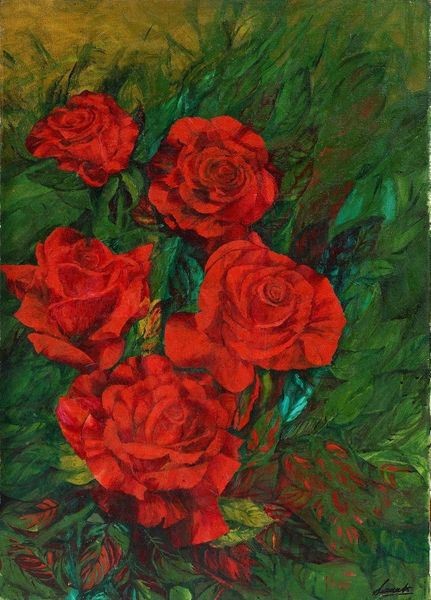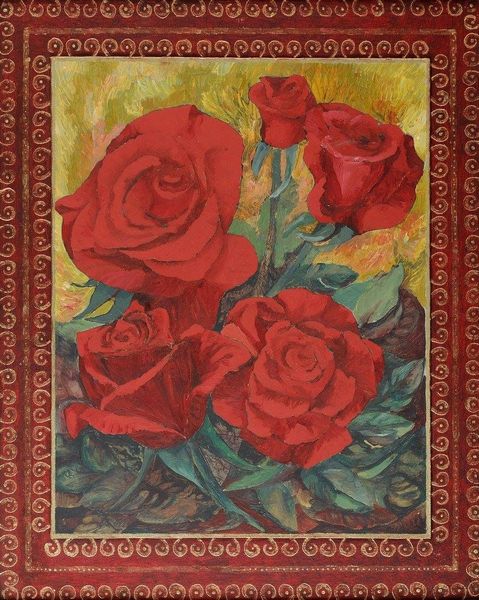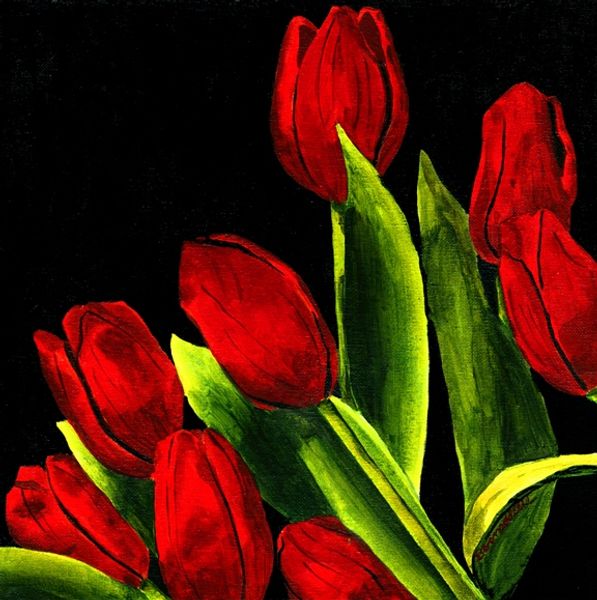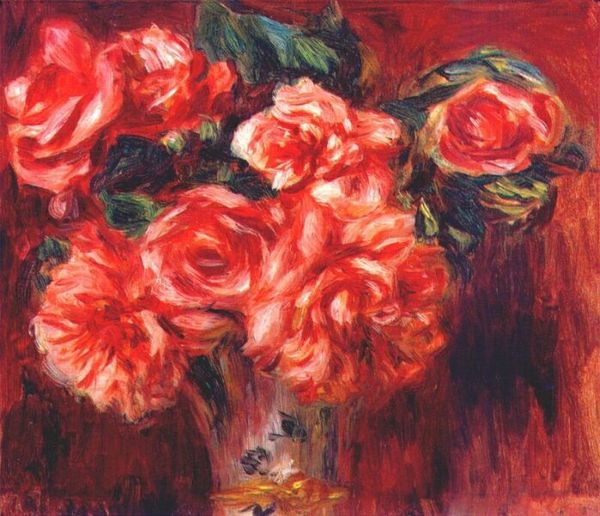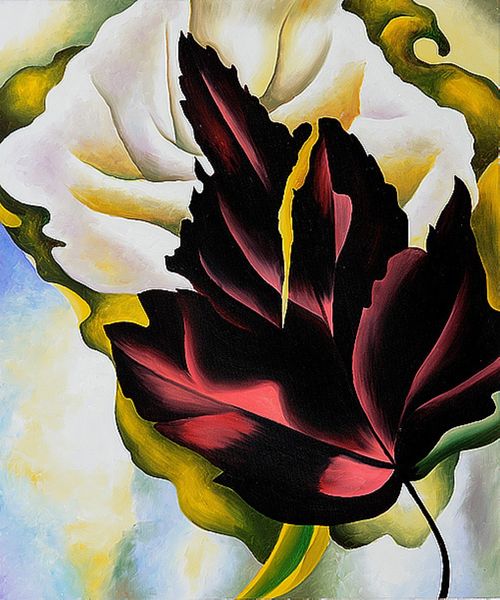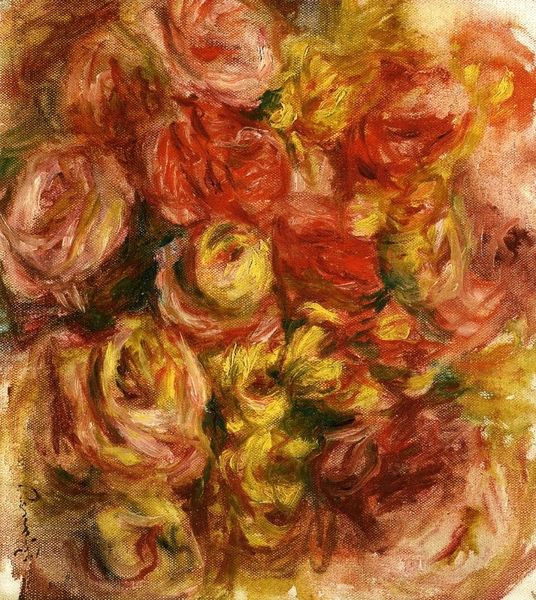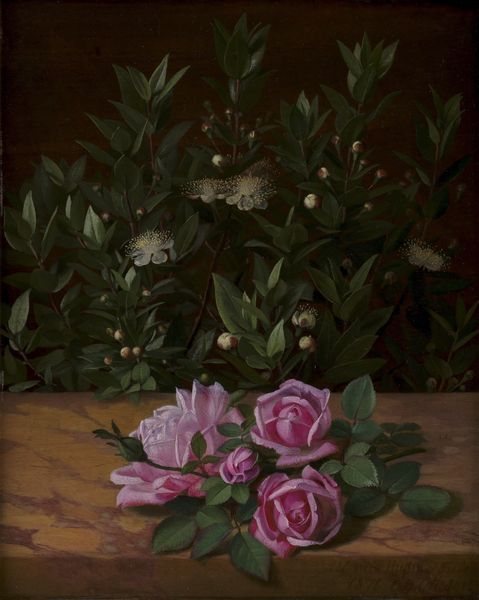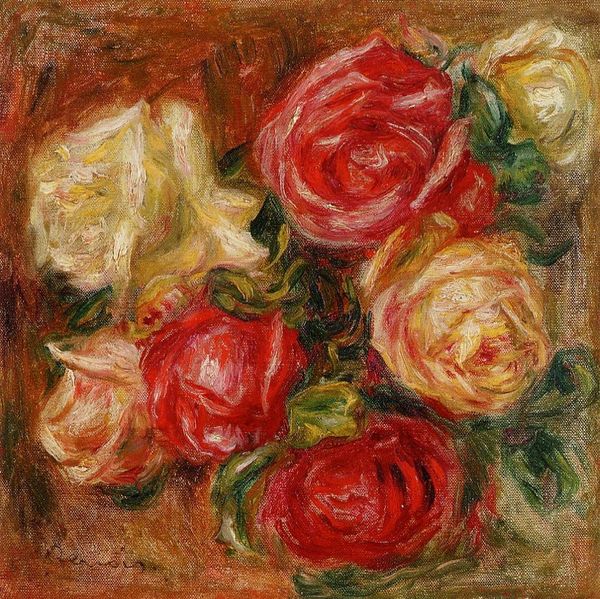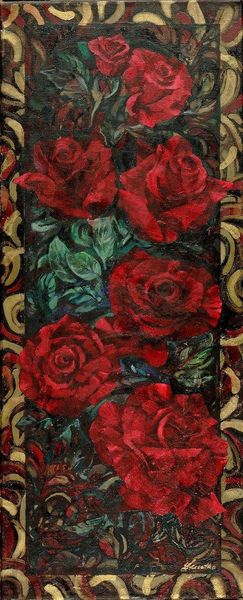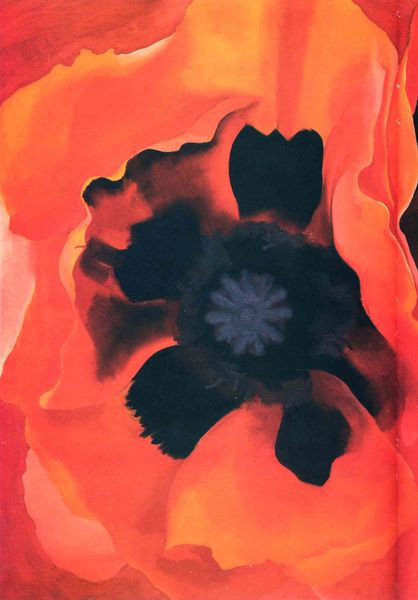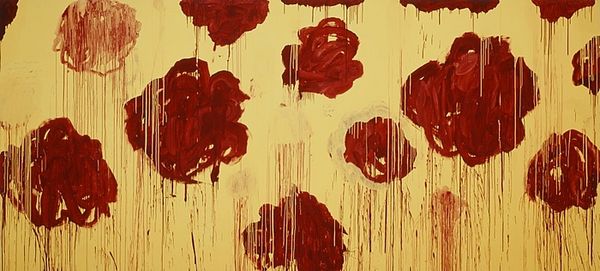
painting, oil-paint
#
painting
#
oil-paint
#
landscape
#
flower
#
figuration
#
surrealism
Copyright: Rene Magritte,Fair Use
Curator: Let's consider René Magritte's 1960 oil painting, "The Tomb of the Wrestlers." Editor: It's intensely captivating. That overwhelming red rose immediately dwarfs any sense of spatial understanding, which disorients the viewer completely. The materiality is undeniably intriguing; the scale shift plays such a significant role. Curator: Exactly! This piece typifies the Surrealist exploration of subconscious disruption. The rose, traditionally a symbol of love and beauty, is here inflated and contained within the claustrophobic interior. Think about how this plays against patriarchal tropes, in which female subjects are often framed passively. Editor: Yes, and the contrast is fascinating from a material perspective too. The delicate petals are juxtaposed with the room's stark architecture—hard walls against the rose's organic softness. This could comment on industrial impacts and control. Is the rose a stand-in for a pre-industrial age? The material properties really give meaning to this. Curator: The ambiguity is purposeful, I believe. We can discuss the history of domestic spaces and their representations in the visual arts, and question how women are often situated within the confined environments shown here. The red and size seem to suffocate the viewer and maybe suggests suppressed voices or struggles. The window—seemingly a typical feature to represent liberation—provides no alternative as the rose dominates the frame. Editor: Agreed! The role of the production techniques also contribute to these observations; Magritte clearly considered this juxtaposition when choosing the space as its cage. And consider, for a moment, how many hours and supplies he invested. What choices he made, what brushes he favored and why. That kind of hands-on insight shapes interpretation. Curator: Looking at Magritte's work, then, from an intersectional lens really unlocks these many layers. It urges us to interrogate representation, gender and imposed environments. It serves as more than aesthetic visual consumption but provides political messaging. Editor: Yes, his craftsmanship and the physical creation clearly emphasize his deeper, symbolic considerations. Thanks for exploring that. Curator: Absolutely. It highlights that art isn't simply something beautiful, but a record of cultural conversations.
Comments
No comments
Be the first to comment and join the conversation on the ultimate creative platform.
